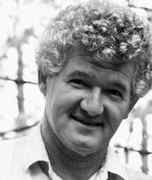Person: Lax (3), Peter

Peter Lax is a Hungarian mathematician who works on scattering theory.
Mathematical Profile (Excerpt):
- In Peter's high school studies, mathematical problem solving was specifically encouraged and it certainly stimulated his interest as it did for many other talented Hungarian students at this time.
- Denes König, who was professor at the Technical University of Budapest, did a great deal to help talented youngsters like Peter Lax.
- Arriving in the United States, Lax was soon visited in his home by von Neumann who had been told by Denes König that this really outstanding young Hungarian mathematician was coming.
- Lax was involved in the Los Alamos Scientific Laboratory Manhattan Project during 1945-46.
- Lax was appointed as an Assistant Professor at New York University 1951.
- In 1958 Lax was a Fulbright Lecturer in Germany and in the same year he was promoted to full professor at New York University.
- Lax had made remarkable contributions early in his career and he continued to produce research which changed the direction of many areas of mathematics.
- Lax thrived in the Courant Institute of Mathematical Sciences New York University where applied mathematics was studied alongside relevant pure mathematics in an exciting mix of ideas which led to great progress.
- In 2005 Lax was awarded the highly prestigious Abel Prize.
- We should remark that the difficulty in giving a description of Lax's contributions is that they are so numerous and important that in an article of this length it is impossible to do them justice.
- In the 1950s and 1960s, Lax laid the foundations for the modern theory of nonlinear equations of this type (hyperbolic systems).
- In addition, he introduced the widely used Lax-Friedrichs and Lax-Wendroff numerical schemes for computing solutions.
- Another important cornerstone of modern numerical analysis is the 'Lax Equivalence Theorem'.
- Inspired by Richtmyer, Lax established with this theorem the conditions under which a numerical implementation gives a valid approximation to the solution of a differential equation.
- Lax became fascinated by these mysterious solutions and found a unifying concept for understanding them, rewriting the equations in terms of what are now called "Lax pairs".
- Together with Phillips, Lax developed a broad theory of scattering and described the long-term behaviour of solutions (specifically, the decay of energy).
- Let us now look briefly at some books which Lax wrote.
- Following up on a hint in Gelfand's address to the 1962 Stockholm International Congress, they showed that the Lax-Phillips scattering theory, applied to the wave equation appropriate to hyperbolic space, is a natural tool in the theory of automorphic functions.
- The use of scattering theory for automorphic functions was studied by Lax and Phillips in Scattering theory for automorphic functions (1976).
- However, Lax published other books between these two texts on scattering theory.
- In 1970 Lax and Glimm published Decay of solutions of systems of nonlinear hyperbolic conservation laws, a difficult work which requires familiarity with earlier work of both authors.
- SIAM published Lax's Hyperbolic systems of conservation laws and the mathematical theory of shock waves in their Conference Series in Applied Mathematics in 1973.
- Lax wrote Linear algebra in 1997.
- A fairly recent book by Lax is Functional analysis (2002) which, like the linear algebra text, grew out of graduate lectures that Lax gave at the Courant Institute over many years.
- To list all the honours that have been given to Lax takes up quite a bit of space.
Born 1 May 1926, Budapest, Hungary.
View full biography at MacTutor
Tags relevant for this person:
Prize Abel, Origin Hungary, Prize Wolf
Thank you to the contributors under CC BY-SA 4.0! 

- Github:
-

- non-Github:
- @J-J-O'Connor
- @E-F-Robertson
References
Adapted from other CC BY-SA 4.0 Sources:
- O’Connor, John J; Robertson, Edmund F: MacTutor History of Mathematics Archive
